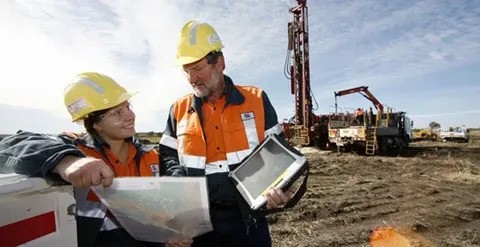Mining Jobs in the US
Mining has been a cornerstone of the American economy for centuries. From the Gold Rush era to the modern extraction of coal, metals, and rare earth minerals, the industry has played a pivotal role in economic growth and technological advancement. Today, the mining sector continues to provide thousands of jobs across the United States, offering competitive salaries and career stability. However, the industry also faces significant challenges, including environmental concerns, automation, and shifting market demands.
This article explores the types of mining jobs available in the US, the benefits and risks associated with the industry, and future prospects for those interested in pursuing a career in mining.
Types of Mining Jobs in the US
The mining industry in the US is diverse, with opportunities in coal mining, metal ore mining, nonmetallic mineral mining, and quarrying. Below are some key categories of mining jobs:
1. Underground and Surface Mining Roles
- Mine Laborers – These workers perform physically demanding tasks, such as drilling, loading explosives, and transporting materials.
- Heavy Equipment Operators – They operate bulldozers, loaders, haul trucks, and other machinery to extract and transport minerals.
- Drillers and Blasters – These specialists handle drilling operations and explosive placements to break rocks and extract valuable materials.
- Roof Bolters – These workers install roof support systems in underground mines to prevent collapses and ensure safety.
2. Technical and Engineering Positions
- Mining Engineers – They design and oversee mining operations, ensuring efficiency and compliance with safety and environmental regulations.
- Geologists – These professionals study rock formations and mineral deposits to determine the best locations for mining.
- Metallurgists – They analyze and refine extracted minerals to maximize their economic value.
- Environmental Engineers – These specialists focus on minimizing the environmental impact of mining activities and ensuring compliance with regulations.
3. Safety and Compliance Jobs
- Mine Safety Inspectors – They conduct inspections to enforce safety standards and prevent workplace hazards.
- Health and Safety Officers – They develop safety protocols and conduct training to reduce accidents and occupational illnesses.
4. Support and Administrative Roles
- Logistics and Supply Chain Managers – They coordinate the transportation of raw materials and finished products.
- Human Resources Specialists – They manage hiring, training, and employee relations within mining companies.
- IT and Data Analysts – These professionals help implement digital technologies, automation, and data analysis to optimize mining operations.
Benefits of Working in the Mining Industry
The mining sector offers numerous advantages for workers, making it an attractive career choice:
1. Competitive Salaries and Benefits
Mining jobs typically pay above-average wages. According to the Bureau of Labor Statistics, mining engineers earn a median annual wage of over $90,000, while heavy equipment operators make around $50,000 to $80,000 per year. Many mining companies offer comprehensive benefits, including health insurance, retirement plans, and bonuses.
2. Job Stability and Demand
Despite periodic downturns, mining remains essential for industries such as construction, manufacturing, and energy. The growing demand for lithium, cobalt, and rare earth minerals for renewable energy and technology sectors ensures continued job opportunities.
3. Career Growth and Training Opportunities
Many mining companies invest in employee training, apprenticeships, and tuition reimbursement programs. Workers can advance from entry-level positions to managerial roles with the right experience and education.
4. Opportunities in Remote and Urban Areas
While mining operations are often located in remote regions, many companies provide housing, transportation, and other amenities. Some roles, such as data analysis and environmental compliance, can be performed in urban centers or remotely.
Challenges in the Mining Industry
Despite its benefits, the mining industry presents several challenges for workers and employers alike:
1. Health and Safety Risks
Mining remains one of the most hazardous industries due to risks such as cave-ins, gas explosions, and exposure to harmful chemicals. Strict safety protocols and modern technology, including automated machinery and wearable safety devices, help mitigate these risks.
2. Environmental Concerns and Regulations
Mining operations can have significant environmental impacts, including deforestation, water pollution, and habitat destruction. Stricter regulations require companies to adopt sustainable practices, such as land rehabilitation and emissions reduction.
3. Automation and Job Displacement
The adoption of AI, robotics, and automation in mining operations is reducing the need for some manual labor positions. While this improves efficiency and safety, it also necessitates workforce retraining to adapt to technological advancements.
4. Market Volatility and Economic Cycles
Mining jobs are often affected by fluctuations in commodity prices. Economic downturns can lead to mine closures and layoffs, while booms create high demand for workers.
Future Prospects for Mining Jobs in the US
The future of mining in the US is shaped by emerging trends and technological advancements:
1. Rise of Critical Minerals Mining
With the growing demand for batteries, electric vehicles, and renewable energy, the US is investing in domestic lithium, cobalt, and rare earth element mining. This sector is expected to generate thousands of new jobs.
2. Sustainable Mining Practices
Eco-friendly mining techniques, such as in-situ leaching and dry processing, are gaining traction. Companies that prioritize sustainability will likely create more job opportunities in environmental management and green technology.
3. Increased Government Support
Federal initiatives, such as grants and tax incentives for domestic mineral production, aim to boost mining employment and reduce reliance on foreign resources.
4. Expansion of Digital and Automation Roles
Mining companies are integrating smart sensors, AI-driven analytics, and remote operation centers, leading to a demand for tech-savvy professionals.
Mining Jobs in the US
Mining jobs in the US continue to offer lucrative and stable career opportunities despite evolving industry challenges. While automation and environmental regulations are reshaping the sector, new opportunities in critical minerals and sustainable mining practices promise a dynamic future. Whether you are interested in hands-on labor, engineering, safety, or technology, the mining industry provides diverse career paths with long-term potential.
For those willing to adapt to industry trends and acquire relevant skills, mining remains a viable and rewarding career choice in the US.



